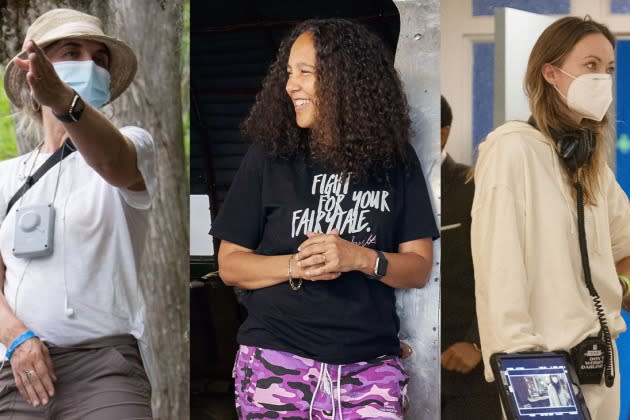Latest Diversity Reports From USC, SDSU Reveal Room for Improvement Behind the Camera
- Oops!Something went wrong.Please try again later.

As 2023 dawns, two major academic organizations that measure the progress of inclusion in Hollywood are looking back at the track record for 2022 in film.
The USC Annenberg Inclusion Initiative’s latest “Inclusion in the Director’s Chair” report analyzes the gender and race/ethnicity of the directors behind last year’s 100 highest-grossing movies in the U.S., while the San Diego State Center for the Study of Women in Television and Film’s most recent “Celluloid Ceiling” report examined the employment of women in key behind-the-scenes roles in both the 100 and 250 top-grossing movies at the domestic box office.
More from The Hollywood Reporter
Film Independent Announces Inaugural Filmmakers for Imaginar Producers Residency (Exclusive)
Ludacris' Media Company Inks Licensing Deals to Boost Black-Owned Businesses
In the one category shared by both studies — percentage of women directors among top 100 films – the schools came up with slightly different counts (possibly because of the criteria each group uses to compile its Box Office Mojo sampling). SDSU reported that 11 percent of 2022’s helmers were women (down from 12 percent in 2021 and a high of 16 percent in 2020), while USC counted 9 percent in 2022 (down from 12.7 percent in 2021 and a high of 15 percent in 2020). The total number of women helming a top 100 movie — 10 of 111 directors — was small enough for USC to list them by name: Olivia Newman (Where the Crawdads Sing), Gina Prince-Bythewood (The Woman King), Olivia Wilde (Don’t Worry Darling), Jessica M. Thompson (The Invitation), Kat Coiro (Marry Me), Rosalind Ross (Father Stu), Halina Reijn (Bodies Bodies Bodies), Kasi Lemmons (Whitney Houston: I Wanna Dance with Somebody), Chinonye Chukwu (Till) and Maria Schrader (She Said).
“Five years after #MeToo exploded and two years following the murder of George Floyd, Hollywood has evidenced little change for women and underrepresented directors — particularly women of color,” AI2 founder Stacy L. Smith said in a statement accompanying USC’s report, which noted that only three women of color — Prince-Bythewood, Lemmons and Chukwu — directed a top 100 movie in 2022 and across 16 years of AI2’s research, women of color directed just 21 (1.3 percent) of 1,600 films. “We’d like to see not only the tradition change but also the hiring practices that continue to marginalize women and people of color as directors.”
The SDSU study notes that movies with at least one woman director tend to hire more women in key behind-the-scenes roles than films directed only by men: Among woman-directed movies, women represented 53 percent of writers (compared with 12 percent of male-helmed features), 39 percent of editors (compared with 19 percent), 19 percent of cinematographers (compared with 4 percent) and 18 percent of composers (compared with 6 percent).
Overall, since the release of the first “Celluloid Ceiling” report 25 years ago, the share of women in key roles behind the camera (directors, writers, producers, executive producers, editors and cinematographers) for top 250 movies has inched up from 17 percent in 1998 to 24 percent in 2022.
“Given the number of panels, research reports and hand-wringing devoted to this issue over the last two and a half decades, one would expect more substantial gains,” CSWTF founder Martha Lauzen said in a statement. “It took the accumulation of over two decades of advocacy efforts, research reports and an EEOC investigation to double the percentage of women directors from 9 percent to 18 percent, and women are still dramatically underrepresented in that role…. It’s easy to miss the larger story of women as filmmakers since the numbers can rise slightly one year, only to fall a bit in the next. We get distracted by the incremental movement of the numbers from year to year, but often fail to notice the lack of substantial gains over the long term.”
Best of The Hollywood Reporter
